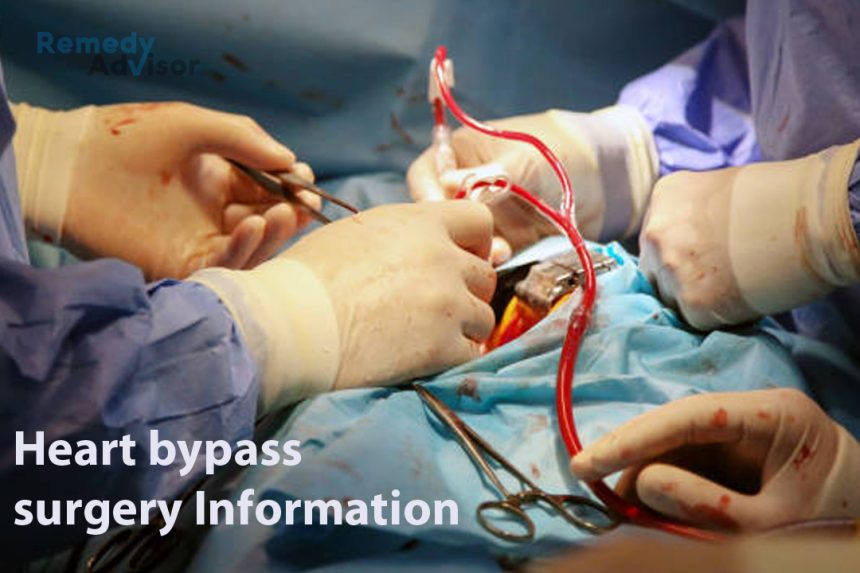Since its introduction in 1967, coronary artery bypass graft (CABG) surgery has enabled thousands of people to survive severe coronary artery disease.
Coronary artery disease (atherosclerosis) occurs when fatty deposits form in the coronary arteries, restricting flow of oxygen-rich blood to the heart. Over time, atherosclerosis may lead to a form of chest pain called angina or to heart attack.
In bypass surgery, doctors reroute blood flow around arterial blockages, using blood vessels grafted from another part of the body, usually a leg.
The procedure has become so common that people tend to forget just how serious it is.
One surgeon slices open the chest, cracking the breastbone (sternum) to reach the heart, while another “harvests” the arteries or veins to be grafted. The heart is stopped for several hours as doctors attach the grafts.
Bypass surgery generally requires a hospital stay of four or more days, plus one-month convalescence.
Bypass surgery is often the best therapy for heart disease, but it is not the only approach. Other options to consider
Lifestyle modification
As Dr. Dean Ornish and other researchers have shown, a low-fat diet (10% of calories from fat) can slow the progress of atherosclerosis and in some cases reverse it. This approach is very effective when combined with cholesterol-lowering drugs called statins.
Drawback: The low-fat diet doesn’t always work. And such a diet is hard to follow. Only about 15% of patients are motivated enough to stick with it.
Angioplasty
This procedure costs less and is less invasive than open-heart surgery. Often, the patient can go home the same day. The surgeon inserts a catheter into a tiny incision in the leg and threads it into the coronary artery. A balloon on the tip is then inflated to flatten the plaque against the artery wall, widening the artery and easing the flow of blood.
Drawback: About 25% of the time, angioplasty has to be repeated to eliminate plaques that recur sometimes within six months of the original operation.
To prevent recurrence, some cardiologists now use stents tiny metallic tubes inserted into the artery to keep it open.
Keyhole surgery
This experimental procedure is a less invasive variant of conventional bypass surgery. Instead of cracking the chest, the surgeon makes a small incision between the ribs. Using an endoscope, he/she removes the internal thoracic artery from the chest and grafts it onto the coronary artery.
For accessible blockages, keyhole surgery should prove just as effective as CABG. But it’s still too early to know its exact success rate.
Which approach is best?
Can you get by using one of these less invasive approaches? The answer depends on several factors
• Condition of the heart
If the heart can pump enough blood despite the blockages, bypass surgery can probably be avoided.
Bypass surgery is preferable if the heart has been weakened by heart attack.
• Location and number of blockages
The more severe and numerous the blockages, the greater the need for bypass surgery. Bypass is preferable to angioplasty if blockages are “upstream” (close to the point where the arteries branch off of the aorta) if the patient has one or more blockages of the left main coronary artery and/or if two or all three coronary vessels are blocked.
• Level of chest pain
If angina isn’t relieved by medication, bypass is probably the best option.
Angioplasty may be more appropriate if the patient has had just one tiny heart attack, with minimal damage to the heart has just started to experience angina or is highly motivated to follow a low-fat diet and regular exercise regimen.
If your doctor recommends bypass, consult a bypass surgeon and a cardiologist who specializes in angioplasty.
What to do before surgery?
Anyone who decides to have bypass surgery can increase the chance of a successful operation by doing the following
• Find a good surgeon
He should be board-certified in cardiothoracic surgery. In addition, he should perform at least 150 bypass operations each year. Fewer than that, and he may lack the necessary expertise.
Some patients are uncomfortable asking a surgeon about these details. But good surgeons are happy to share this information and you want only the best. If the surgeon seems defensive, find another one.
• Check out the hospital
It should perform at least 200 bypass operations a year, with a death rate of less than 1.5%. The hospital should be accredited by the Joint Commission.
• Stop smoking
Smoking in the 10 days before surgery increases the risk of pneumonia and other surgical complications.
• Avoid aspirin
If you take aspirin on a regular basis (to prevent heart attack, for instance), ask your cardiologist about stopping temporarily. Doing so will reduce the risk of excessive bleeding during and after surgery.
• Rethink diet and exercise habits
Doctors once thought that bypass surgery would allow patients to carry on their high-fat, low-exercise lives as before. That’s simply untrue. To keep your newly grafted vessels healthy, you must keep fat intake low and get regular exercise.
If you have diabetes: Ask your doctor about “tight control” of your blood sugar before surgery. The better you manage your diabetes, the lower your risk of postoperative infection. It’s essential to continue to monitor your cholesterol level after surgery and take steps to control it with diet, exercise, stress management and if necessary cholesterol-lowering medication.







